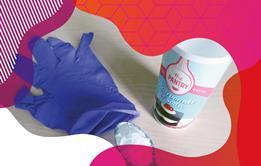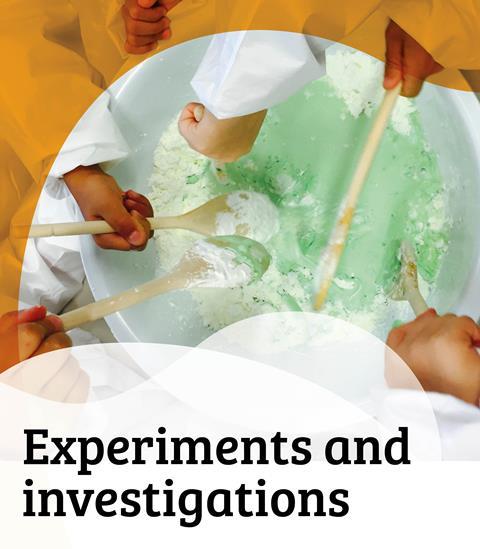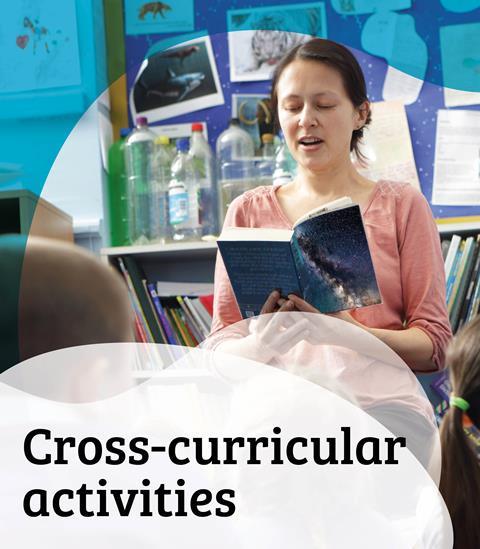Try this investigation to get learners thinking about when an irreversible reaction produces a gas
This resource is also available in Welsh and Irish
Get the Welsh language version.
Get the Irish language version.
This experiment focuses on reacting vinegar and bicarbonate of soda to produce carbon dioxide gas. First watch the video showing the ‘freaky hand’ demonstration, then find out how to run this as an investigation to explore irreversible reactions.
Learning objectives
- To describe the difference between a reversible and an irreversible change.
- To explain that mixing some materials can result in the formation of new ones (in this case, one of these is carbon dioxide) and that this kind of change is not reversible.
- Understand that gases expand to fill their container.
Enquiry skills:
- To be able to use results to make predictions to set up further comparative and fair tests.
Watch the video
The video demonstration below shows how to carry out the ‘feaky hand’ experiment.
Download the supporting materials
Set up and run the investigation with your class using the teacher notes and classroom slides, featuring a full equipment list, method, key words and definitions, questions for learners, FAQs and more.
Teacher notes
Classroom slides
What do learners need to know first?
Learners must have an understanding of the properties of solids, liquids and gases and the behaviour of their particles in each state.
Learners must also have investigated reversible changes and be able to give examples of reversible changes.
Equipment list
- Disposable, stretch latex gloves (careful of latex allergies)
- Bicarbonate of soda
- Vinegar
- Teaspoon
- Small jam jar, cup or beaker (the neck should be wide enough to give a tight seal with the gloves)
Additional resources
- Investigate chemical changes further in our fire extinguisher investigation, lava lamp investigation or bath bomb investigation.
- Try carbon from a candle from our collection of video demonstrations exploring changing materials.
- Read up on irreversible changes in this That’s Chemistry! textbook chapter.
- Introduce your learners to irreversible changes in the kitchen using our primary science podcast.
Downloads
Freaky hand: teacher notes
Editable handout | Word, Size 0.42 mbFreaky hand: teacher notes
Handout | PDF, Size 0.38 mbFreaky hand: classroom slides
Presentation | PowerPoint, Size 8.99 mbFreaky hand: classroom slides
Presentation | PDF, Size 2.32 mb
Additional information
Primary science investigations were developed in collaboration with the Primary Science Teaching Trust

Primary science investigations

Exciting, simple experiments to engage learners with key topics in primary science, featuring classroom slides, teaching notes and video demonstrations. Links to the resources in English, Welsh and Irish.
- 1
- 2
- 3
- 4
- 5
- 6
 Currently
reading
Currently
reading
Irreversible changes and the ‘freaky hand’
- 8
- 9
- 10
- 11
- 12





































No comments yet